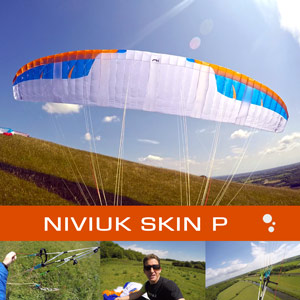
The Niviuk Skin P is an astonishing wing. It weights just 1800g in the size I flew (Skin P 18, 70-95kg, flown at 84). It's also available in a more durable version (Skin) at 2600g. It achieves this phenomenal light weight by being a single-surface wing made of lightweight fabric. But it's also a real paraglider, and there are a few ram-air cells spaced out across the span. As a wing, it feels entirely normal, and it has a normal speed range too. This is a leap forward in technology and a godsend for hike-and-fly pilots.
.jpg)
Construction
The skinny risers are made of dyneema, and look similar to what is featured on the Niviuk Artik 4 P. They are a pleasure to use, they feel adequate and strong in your hand, and the construction looks very sturdy, especially the speedbar pulleys. It makes me wonder why we put up with the heavier bulky risers and maillons that ordinary wings come with.
One of the elasticated sleeves kept on working its way off the base of the lines, but it appears to be entirely cosmetic and doesn't affect the integrity of the line attachments. You also need to take care to avoid twists when taking your brakes off the keepers; these might be missed due to the thinness of the risers.
The brakes snap in to a very tidy little popper, much smaller than the cheap metal lumps we sometimes see on other wings. The brake loops are basic. The lines are all unsheathed, but there are a lot of them: A, B, C, D and little splits to E lines near the wing. Overall, it looks optimised, but sensibly so.

Launching
As expected, it pops up without needing the A risers to lift it, but you can use them if you want to float it up out of a tricky spot. Most of the time I just leant back and didn't bother with the As, even while kiting it back up the slope.
If holding it back on the brakes it will stall from 45 degrees or so, and it rotates quite quickly, and comes back to life fast, but if you just let it come up overhead it stops dancing around. I tried to force it to overshoot by yanking it up, and you really have to cock it up enthusiastically before it will front tuck.
When it does, the wing just shrugs and reflies. You can abuse the nose, yank on the ears, and try your best to collapse it, but it will just come back at you. I imagine that this will be great for high alpine starts when you trip on the snow and don't provide the most professional guidance from the pilot seat.
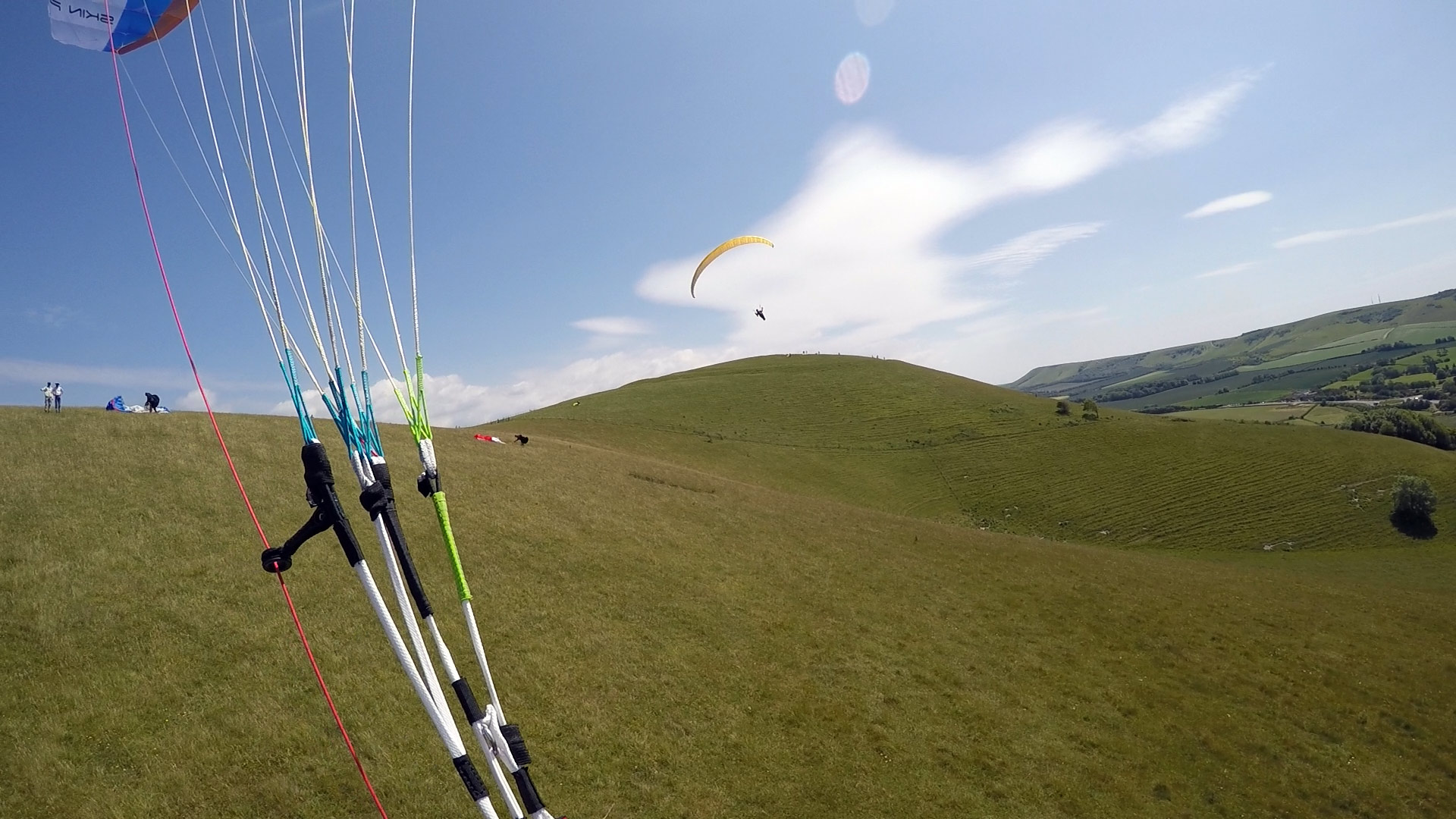
Contrary to other pilot's findings, it seemed to launch at a standard running speed, it didn't 'lift off in nothing'.
In stronger wind you can pin it down with the back risers just like a normal wing, although I didn't have it out in anything over 20km/h. You might struggle to get to the wing to fold it up, because its weighs nothing at all so in strong wind it seems to float off the ground and move away from you even when placed side-on to the wind. No doubt a stabilo line could be employed in this situation.
Overall I found the ground handling fast but manageable for most pilots, it was reasonable to kite and easy to get down.
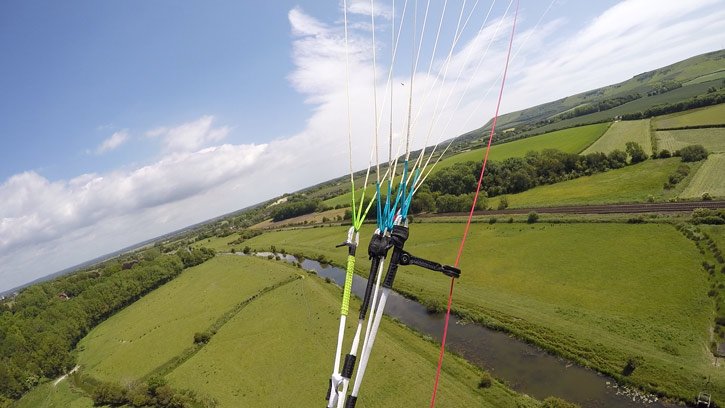
Feel
There is almost no retained energy. Although wings with too much retained energy can be a handful for beginners, there's a downside to having no retained energy at all. I noticed all other wings seemed to gain more every time they passed through bumps, whereas the Skin seemed to be stopped by gusts without gaining height.
As I'm dangling many metres below the wing I can't pretend to know what happens from an aerodynamic point of view, but it feels as if the Skin adapts to the gust (or spills lift), then returns to its normal shape with no memory of what happened, whereas a normal paraglider doesn't deform so a gust of wind generates more lift.
I was expecting the wing to feel more choppy, but it is nice and smooth while at the same time it dampens movements fast. The turns are a little stiff, it responded more to an enthusiastic yank then slight easing off. On the plus side, unlike other small wings I've flown, it is unsurprising in its responses and doesn't require a particularly skilled pilot.
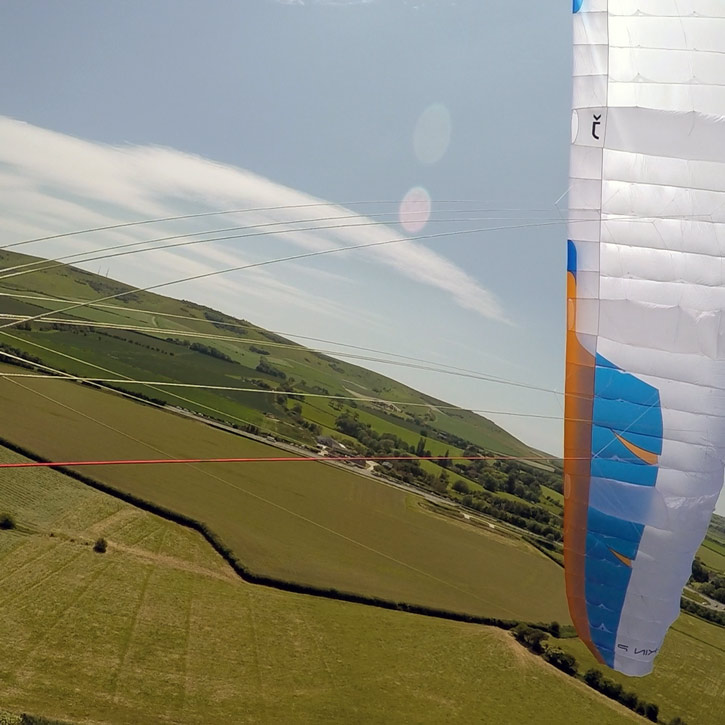
Optimised thermaling turns took me about 20 seconds, whereas I'm used to whipping around in about 12-14 seconds on most other wings I fly. I was expecting more 'hook' in the turn, but it's a lazy turn, and although you can crank it around it's not efficient due to the lack of retained energy - do a steep turn, swing out and there's no climb out / conversion. So it's best to keep this wing as flat as you can and enjoy responsive turns at the gentle end of the scale.

Relative performance
The Skin at my loading (mid-weight) had about the same trim speed as the progression wings (low-mid B) I was sharing the sky with. It was easy to fly with others on the ridge as we had similar speeds, although I did slow the Skin down a little at times to prevent the fluttering fabric in the tip area. It feels best flown on quarter brake, kind of like the old school paragliders of the early 90s.
I was surprised at how well the Skin thermals considering its small wing area, it was climbing reasonably in scrappy conditions, but I could not keep up with the regular XC crew. I slowly lost out against everyone, and watched them climb away from the hill. It was not dramatic, I just needed a little bit more lift to prevent me sinking through the stack.
The latest crop of XC wings (high-end Bs) had noticeably more reach into wind to search for thermals, they were able to push out further from the hill, so the glide on the Skin, whilst being adequate for fun flying, will leave you wanting more if you're an XC hound, where the Artik 4 P is a better choice.
I have to remind myself that we're talking about a single surface paraglider here - up until now it was an amusing concept with limited performance that made it dangerous in any kind of wind. Yet here we have the Skin flying around quite happily in 'normal' paragliding conditions. This opens the market wide open, because you don't need any special skills to understand when and where to fly this wing: it will be exactly the same conditions as you're used to flying in.

^ Fully accelerated Niviuk Skin P, stable enough in smooth air
Top speed
A welcome surprise! The speedbar is easy to push, and you can go all the way to locked out pulleys. It certainly feels a bit more unstable as it speeds up, but it's not critical. It's manageable for an experienced pilot. It may be a bit unsettling for a low airtimer. Either way, you'd have to back off in rough air.
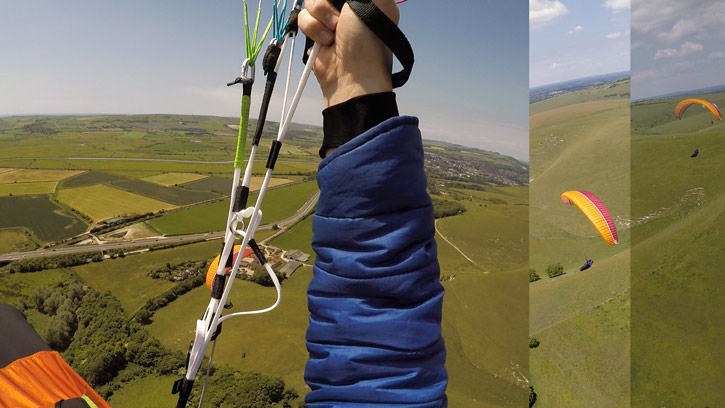
In the left image I'm passing a UP Makalu 3 who was presumably just pointing into wind at trim. I have no idea what his wingloading is, but I had a similar experienced with other wings I passed. My speedbar pulleys are almost touching, and I pass him with roughly 11km/h more than my trim speed and at a reasonable glide angle. For sure it's not as good as a modern XC wing, but it's decent enough for pushing into wind. (As we are in thermic air that's a very rough result).
On the other end of the scale, it can really slow down for featherlight landings. I could have landed on an egg every time I touched down.

^ The Skin P slowed right down, I'm on the ground here
Summary
So who is it for? Well Niviuk have priced it at a very affordable level (half the price of a normal wing) so it might be reasonable for many pilots to consider as a second wing, for fun. It is ideal if you just want to play around the hill or to nip up the mountain after work for a bit of a blast. You could pack it into your travel luggage just in case you get a chance to fly (it is very compact). You could use it to see if you can fly off that peak that looms on the horizon. If you've gone with the full hike-and-fly gear of an ultralight harness, reserve and bag, you can probably make a full kit under 5kg.
It's also ideal for bivouac pilots who have particularly gruelling task ahead or don't care about doing 50km in amazing mountains instead of 80km in amazing mountains. If you're touring with a wing, slashing 3-4kg off your total weight could make a big difference to your stamina.
At the end of the day, it is a paraglider. It flies at a normal speed, it can be accelerated out of trouble, it is stable in flight and responds well to control input. It certainly performs well enough to fly cross country if you get the chance, which Kurt Eder proved with his 80km FAI triangle. That such a piece of engineering can come in a package weighing only 1800g and yet be constructed in such a way that fills me with confidence is nothing short of astonishing.

The Niviuk Skin P leaves me with a smile on my face, and great anticipation of where this development will lead.
The reaction of most pilots when they see it flying, is disbelief. Yes, it flies, and damn well.
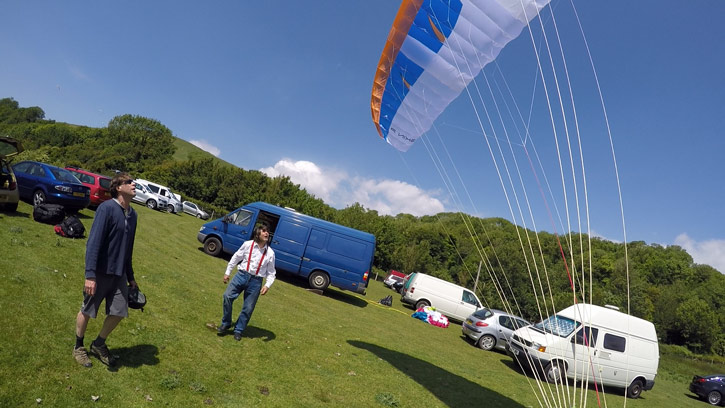
More information on the Niviuk Skin P >
Brought to you by Flybubble
Like what we do? The best way to thank and support us is to buy gear from us and recommend us to others. Review our service on Trustpilot and our products on Flybubble Shop. You can also subscribe to Flybubble Patreon. Thank you!

